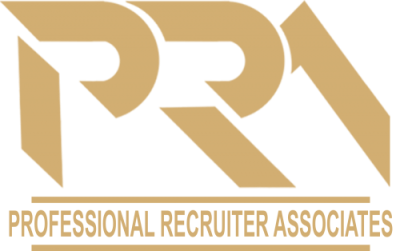Tips for starting a new job during the coronavirus pandemic

The ongoing coronavirus pandemic has completely transformed the way organizations operate. To mitigate the spread of COVID-19, companies have transitioned from the traditional workplace to the virtual workspace on short notice. Distanced collaboration involves a host of technology solutions to help enhance these new workflows and organizational frameworks.
Unfortunately, even with a premium suite of remote collaborative tools cannot fully replicate the face-to-face experience of in-person communication. That said, new hires in particular are faced with a vast spectrum of challenges when onboarding to a new company amid a modern plague.
We communicated with a number of professionals to understand various ways to help with the remote onboarding process. Below, we’ve curated a list of tips to help new employees start a new position and integrate within the virtual team during the coronavirus pandemic.
Onboarding challenges
Starting a new position, remote or in-person, can be a stressful experience. At times, these apprehensions are similar for both in-house and remote new hires; although the virtual element does come with its own challenges. Mika Liss, COO of NeuroLeadership Institute, detailed some of the common anxieties associated with the onboarding process.
“Onboarding is traditionally stressful for new hires. They are anxious for signs they made the right decision to accept the new job and want to be part of the in-group as soon as possible.” Liss said. “Onboarding usually helps provide certainty, which we know our brains crave and seek out. The physical distance can make it more challenging as we often look for non-verbal cues to ascertain if we are in the right place and ‘group.'”
Create a space, develop a routine
A well-equipped workspace setup can help new hires discern these nonverbal cues during the onboarding process. While on-site positions will come with all of the latest technologies and workspace in situ, remote workers will need to create a dedicated work environment at home. Liss noted the importance of creating a dedicated workspace for the new position and establishing habits around the virtual workday.
It may seem appealing to spend less money on the home workspace, but an upfront investment will minimize the headache of less-than-optimal equipment and solutions in the long-run. Make sure you have the fundamental tools and accessories to do the job. Remember to ask your employer if they offer a stipend to assist with creating a remote workspace as a number of organizations have created one-time allowances for telecommuters.
Remember to separate work and personal life
As the workspace literally and figuratively becomes part of the home, the line between one’s personal and professional life blurs. As a result, it’s imperative for telecommuters to establish guidelines and boundaries between these two separate worlds to foster a better work-life balance. While people may feel the urge to check in the inbox for emails after hours, most of these correspondences can wait until the morning. A break from the workday set aside to enjoy hobbies and personal relationships are crucial to a healthy work-life balance.
Get to know your teammates
Building rapport with other employees is an integral part of a new position. However, without the natural face-to-face communications and happenstance interactions afforded by in-house positions, developing comradery with virtual coworkers can be difficult. Nonetheless, there are plenty of ways to familiarizing yourself with the new office mates. Paul Wolfe, SVP of HR at Indeed, detailed a few helpful virtual team building ideas.
“Some simple ways to get to know new colleagues virtually include setting up virtual meet-and-greets with your colleagues or to participate in company-organized events or groups. Since many employers are implementing new ways to keep employees connected and engaged, many new hires are able to join virtual happy hours, trivia sessions, and even Slack channels related to their own individual interests,” Wolfe said.
Map your network
At larger organizations, the various departments and sub-departments can seem labyrinthian for new hires. Understanding a company’s workflows will help employees gain a better understanding of the day-to-day operations. As part of the social networking component, it may also be helpful to proactively map this network framework, said Brian Powers, VP of Talent Acquisition and Development of Fuze, a cloud-based communications provider.
“I also recommend that new virtual hires start mapping their network right away by consciously connecting with as many people as possible, then figuring out where they fit into your network. Make sure to keep your manager looped into your activities and “push” for greater engagement as necessary,” Powers said.
Feel free to asking questions
During the traditional onboarding position, employees may feel anxious about asking questions, and this becomes even more challenging in a remote position. However, without in-person support, it’s important to ask questions early and often; especially during the initial stages of the onboarding process. Asking questions may even help illustrate your enthusiasm about the new position, Wolfe explained.
“Be proactive. Initiating a virtual meet-and-greet with a colleague, or offering to help solve a problem without being asked to do so, can be a great way to demonstrate your willingness to learn and get involved quickly,” Wolfe said.
Enjoy the process
Lastly, while a new position certainly comes with its own set of professional challenges, it’s important to note that there are some advantages inherent within this role. In general, new hires are not expected to hit the ground running at full speed or be as productive as seasoned employees. For this reason, it’s crucial to utilize this time of learning and experimentation to ask questions and get up to speed gradually.
“Luckily in a new role you’re expected to be open and curious at the early stages. Don’t be afraid to play ‘the new kid’ card by asking lots of questions and seeking explanations—in many ways from different people,” Powers said.
This article was originally published in TechRepublic by R. Dallon Adams

Professional Recruiter Associates